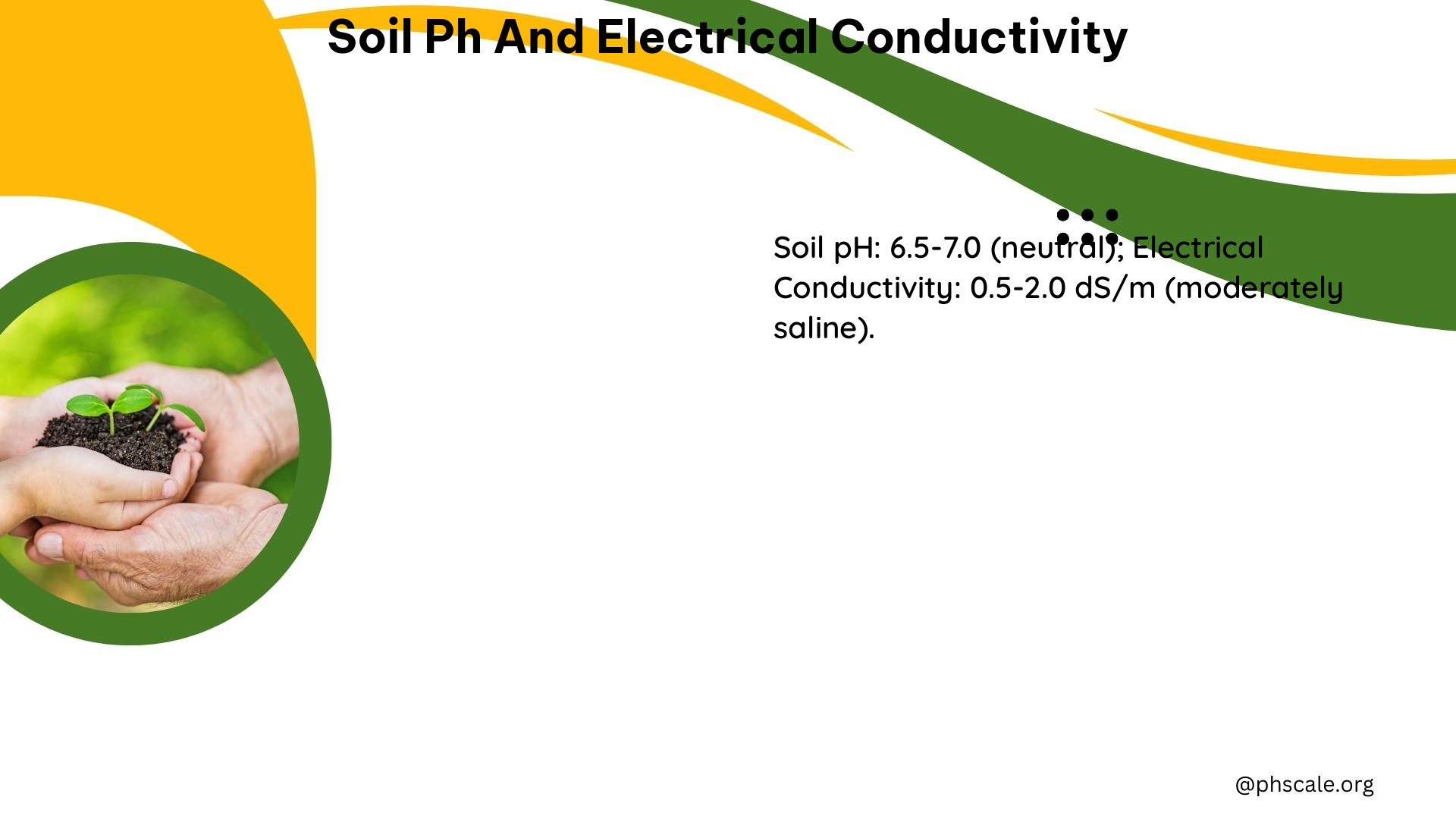Soil pH and electrical conductivity (EC) are two critical parameters that significantly impact plant growth, soil health, and overall ecosystem functioning. Understanding these parameters, their measurement, and their significance is crucial for effective soil management and cultivation.
Soil pH
Soil pH is a measure of the acidity or alkalinity of the soil, which is determined by the concentration of hydrogen ions (H+) in the soil solution. The pH scale ranges from 0 to 14, with 7 being neutral. Soils with a pH below 7 are considered acidic, while those above 7 are alkaline.
Ideal pH Range for Most Plants
The ideal pH range for most plants is between 5.5 and 8.0. This range allows for optimal nutrient availability and uptake by plants. When the pH falls outside this range, nutrient availability can be limited, leading to reduced plant growth and health.
Measuring Soil pH
Soil pH can be measured using various methods, including:
- Hydrion Paper: A simple, low-cost method involving mixing soil with water and applying the solution to hydrion paper, which changes color based on the pH level.
- pH Meter: A more accurate method using a pH meter, which requires calibration with buffer solutions before measuring the pH of the soil solution.
Electrical Conductivity (EC)

Electrical conductivity (EC) is a measure of the ability of soil water to conduct electricity. It is primarily influenced by the concentration of ions in the soil solution and is expressed in decisiemens per meter (dS/m).
Measuring Electrical Conductivity
Electrical conductivity is typically measured by mixing a soil sample with water and then using an EC meter to measure the conductivity of the resulting solution.
Significance of pH and EC in Soil
Both pH and EC play critical roles in soil health and plant growth:
- pH:
- Affects nutrient availability and uptake by plants.
- Influences microbial activity and soil structure.
-
Impacts the mobility and solubility of pollutants in soil.
-
Electrical Conductivity:
- Indicates soil salinity and the presence of soluble salts.
- Influences soil moisture, porosity, and temperature.
- Affects microbial processes and soil fertility.
Contaminants and Chemicals Affecting Soil pH and EC
Soil pH and EC can be impacted by various contaminants and chemicals, including:
- Aluminum: Can be toxic to plants at low pH levels, especially in acidic soils.
- Nitrogen-Fixing Microbes: Soil pH affects the activity of these microbes, which are essential for plant growth.
- Soluble Salts: High levels of soluble salts can increase EC and affect soil fertility.
Balancing and Managing Soil pH and EC
To maintain optimal soil health and plant growth, it is essential to balance and manage soil pH and EC:
- pH Balancing: Add lime to raise pH or elemental sulfur to lower pH, depending on the specific needs of the plants being grown.
- EC Management: Implement irrigation and drainage strategies to manage soil salinity and maintain optimal EC levels.
Home Remedies and DIY Methods
Some home remedies and DIY methods for managing soil pH and EC include:
- Composting: Adding compost can help balance soil pH and improve soil structure.
- Mulching: Mulching can help regulate soil temperature and moisture, which in turn affect EC.
- Natural Fertilizers: Using natural fertilizers like manure or fish emulsion can help maintain optimal nutrient levels and pH.
By understanding the importance of soil pH and electrical conductivity, gardeners, farmers, and land managers can make informed decisions to optimize soil conditions and promote the healthy growth of plants.
References
- Smith, J. L., & Doran, J. W. (1996). Measurement and use of pH and electrical conductivity for soil quality analysis. Methods for assessing soil quality, 49, 169-185.
- Geosciences LibreTexts. (2021). pH and Electrical Conductivity. Retrieved from https://geo.libretexts.org/Bookshelves/Environmental_Geology/Book%3A_Environmental_Geology_(Keller)/08%3A_Soil_and_Soil_Pollution/8.03%3A_pH_and_Electrical_Conductivity
- University of Florida. (n.d.). Soil pH and Electrical Conductivity: A County Extension Office Laboratory Manual. Retrieved from https://edis.ifas.ufl.edu/publication/SS118
- Soil Water Environmental Laboratory (SWEL). (n.d.). pH and Electrical Conductivity (EC) Standard Operating Procedure. Retrieved from https://swel.tamu.edu/wp-content/uploads/2019/08/pH-and-EC-SOP.pdf
- Natural Resources Conservation Service. (2022). Soil Electrical Conductivity. Retrieved from https://www.nrcs.usda.gov/wps/portal/nrcs/detail/soils/health/assessment/?cid=nrcs142p2_053870
